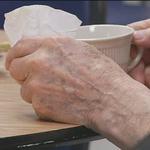Mental health articles
OF mental health care and mentally ill
What is injury
Injury represents the third pathway to disability. Injury as noted in the discussions above is not a singular pathway because injuries may occur among those with developmental disabilities at any age, among those with no disability, and may be precipitated by chronic conditions among older people. These characteristics represent a limitation in the model; nevertheless, severe-catastrophic injury immediately compromises activity performance and may dramatically affect participation – especially work, education, and social support systems. Older people often because of compromised mobility, vision, environmental hazards, or poor conditioning may fall and experience a broken hip or TBI. Stoke may have catastrophic, long term consequences. Declining physiologic reserve among older people may compromise recovery.
Severe injuries acquired early in life – namely spinal cord injury and traumatic brain injury – are defined by a constellation of changes defined by the trajectory of the particular condition. People with SCI and TBI experiences changes with time – overuse of neck and shoulders, for example – as well as the changes in chronic conditions experienced by older people without disability.
Wars have generally defined disability policy in theUnited Statesin large part because war-injured veterans become a focal point for social change. World War II left a legacy of vocational rehabilitation, andViet Namdid much to define the independent living movement. The wars in Iraq and Afghanistan have defined anew cohort of people with severe injuries, and the term “polytrauma” has evolved to characterize young men and women who have experienced multiple severe injury-related disabilities. Blast injures result in high numbers of young people with TBI, limb loss, and SCI, as well as Post Traumatic Stress Disorder (PTSD). Snelland Halter (2010) describe mild traumatic brain injury as “a signature wound ofwar.” Rosenfeld and Ford (2010) provide a review of blast injuries, mild traumatic brain injury and mental health problems. Braham, Wilgenburg, Ingalla, Chang, and Goodrich (2009) note visual impairment and dysfunction among those with traumatic brain injury.
When these young people return home, care is generally provided by spouses and parents. As these young men and women grow into middle and old age, they will experience the effects of catastrophic injury combined with the changing characteristics of the injury and the aging process. Their caregivers will age with them. This cohort may have the opportunity to redefine what it means to age with a disability. Changes may occur in terms of access to quality care from well trained personnel, as well as substantial changes in the environment that may better accommodate their disabilities.
From Mental health articles, post What is injury
Post Footer automatically generated by wp-posturl plugin for wordpress.
More from my site
Tags: Injury







Leave a Reply